Royal Dome Layered Kalira: Majesty Worn on the Wrist
The Royal Dome Layered Kalira stands out as one of the most exquisite expressions of bridal tradition in North India. This piece of adornment doesn’t simply decorate—it narrates a story of heritage, love, and artistry. Its layered domes bring depth, volume, and regal presence, turning every movement into a visual poetry.
The Essence & Origins
Kaliras (or Kaleere / Kalire) are traditional ornaments that Punjabi brides wear on their wedding days. Generally tied to the bride’s bangles during the Chooda ceremony, they are meant to bestow blessings, fortune, and protective goodwill.Over time, what began as simple dangling tassels or pieces made from dried fruits evolved into ornate metal structures with domes, pearls, charms, and intricate motifs. The dome shape itself draws from architecture and symbolism—domes often represent the heavens or shelter—making each tier a layer of protection and blessings.
Design Characteristics
The Royal Dome Layered Kalira typically features multiple dome‑shaped elements stacked or arranged in tiers. These domes may vary in size: a larger primary dome at the center or top, with smaller ones surrounding or beneath it. Between layers, there may be chains, pearl strings, beads, bells (ghungroos), charms, and leaf‑motifs which swing and glimmer with motion. The metal finish may be golden, antique gold, oxidised gold, or sometimes mixed with other metal tones. Designers ensure that despite the grandeur, the piece remains wearable—balancing weight, attachment strength, and movement.
From examples like golden antique dome & pearl bridal kaleeras and triple dome oxidised designs, we see that even with multiple layers, artisans manage to retain comfort by using lighter metals or thinning out certain decorative elements.
Symbolism & Rituals
Beyond its ornate beauty, the layered dome design heightens the emotional impact of bridal rituals. One such ritual: after tying, the bride shakes her Kaliras above unmarried friends or cousins; it’s believed if a piece or charm falls on someone, they might be next to marry. The multiple layers contribute more dangling bits, more chances for charms to fall—and more suspense, laughter, and joy.
Each tier or dome may metaphorically represent different blessings—prosperity, love, protection, wisdom. The layered domes also amplify visual drama in photos and during ceremonies, making them perfect for brides who wish to combine tradition with impactful aesthetics.
Modern Trends & Customization
In current bridal fashion, the Royal Dome Layered Kalira is becoming a canvas for personalization. Brides are opting to include initials, charms that reflect personal stories, or motifs meaningful to them (animals, symbols, etc.). Gold hue variations are popular—antique gold, rose‑gold, or gilded finishes to match the bridal palette. The layering allows designers to experiment: mixing dome sizes, using alternating materials (pearls vs metal vs stones) to reduce weight while preserving richness.
Care & Practical Tips
-
When choosing, ensure the layers are well‑anchored; weak joints between demi‑domes can break.
-
Try the piece on with the lehenga or outfit to check how it moves—too heavy may strain the wrist.
-
Store in a soft cloth bag; keep away from moisture and chemicals to prevent tarnishing.
-
Before wearing, ensure any charms or dangling parts are secure—loss during ceremonies is common if finishes are loose.
Conclusion
The Royal Dome Layered Kalira is a perfect blend of grandeur and tradition—an adornment that elevates bridal attire, holds deep cultural meaning, and lets each bride carry a little bit of royalty. It is not just jewellery; it’s legacy, beauty in layers, and a cherished memory around every wrist.


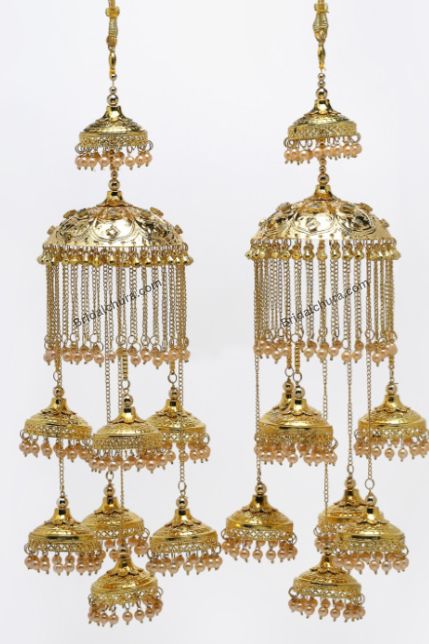
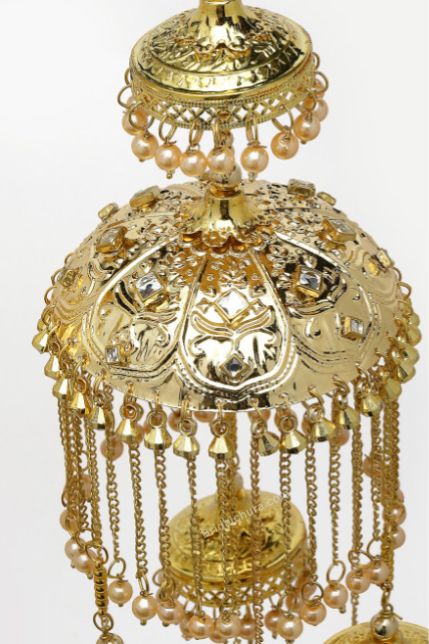
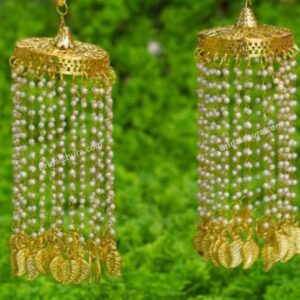

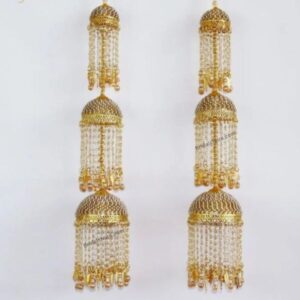
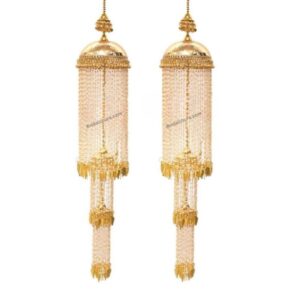
Reviews
There are no reviews yet.